The 3-4 weeks after first bloom, and typically the last two weeks of July and the first two weeks of August, is a critical window to scout and manage insect pests. This is when we are setting the bolls that will contribute most to yield, and it’s also a time insects are most attracted to the crop (with plenty of susceptible fruiting structures to feed on). Most of the comments in this article will focus on plant bug and stink bug management. However, bollworm management will become a bigger factor by the end of the month. I’ll hit on that topic in the near future. Bollworm moth trap catches continue to be low at this time.
Thus far, plant bug pressure as been below average, but there are clear signs that infestations are rapidly on the rise in many areas. The drop cloth becomes an important tool during bloom to scout for immature plant bugs. The suggested treatment threshold for tarnished plant bug is an average of three per drop cloth. The threshold for stink bugs is one per drop cloth, and thus, you can essentially count a stink bug as equivalent to 3 tarnished plant bugs when making a treatment decision. We are also seeing more clouded plant bugs than usual in some areas, and as always, I suggest counting them as equivalent to 1.5 tarnished plant bugs (because they are more likely to feed on bigger bolls).
As for insecticide selection, this is the time for ‘go to’ products, either by themselves or in combination. I like mixing in many situations, and it is sometimes needed to maximize control of both stink bugs and plant bugs (and bollworms later, of course). I’m mostly talking about Acephate (Orthene), Transform, Diamond, and Bidrin. If applying these product by themselves, my suggested standard rates are Acephate at 0.75 lb ai/a, Transform at 1.5 oz/a, Diamond at 6 oz/a, and Bidrin (6-8 oz/acre). However, Diamond does not kill adult insects and 4-6 oz/a is typically tank mixed with other insecticides. If stink bugs are present at threshold numbers, Transform or Diamond should be tank mixed with products like Acephate or Bidrin are needed. I’ve had good results from mixing a reduced rate of Transform (e.g., 1 oz) with Acephate (0.5 lb) or Bidrin (4 oz). Bifenthrin or another pyrethroid is an option as a tank mix partner with any of these products, especially if there are many stink bugs in the field. But never use a pyrethroid insecticide by itself for control of tarnished plant bug.
Rain can muck up the works. I lean towards Diamond when there is a high chance of rain within 12-24 hours of application. It has good rainfastness after only a few hours. Any rain within the first 12-24 hours after application will reduce the efficacy of most insecticides. However, if rain holds off for 4-6 hours after application, I would not automatically retreat a field. In other words, you can probably afford to wait until the next scheduled scouting time to decide if retreatment is needed. Obviously, some of this depends on how bad the infestation was to begin with, but if is rains within a few hours of application of Orthene or Bidrin, it’s just bad luck and time to respray for plant bugs.

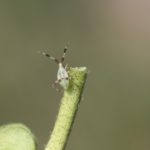
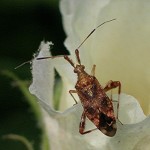
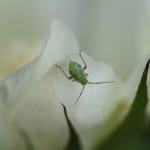
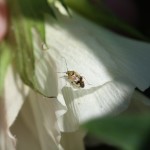
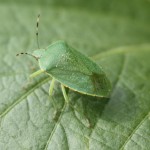
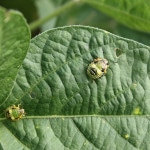

It was unfair of me to imply Bidrin has a rainfastness similar to Acephate, which is among the worst to wash off if you get rain within the first 12 hours after application. It has better rainfastness that Acephate, and the company ‘stands behind’ a 4-hour rainfastness. With stink bugs, Bidrin often lay them low within two hours. It’s a real strength of that product. I’ve also had people mention the extended re-entry interval of Bidrin, but a supplemental label came out this year that reduced the interval to 72 hours. I should also mention that there is data, especially from my colleagues in Arkansas and Mississippi, that adjuvants can improve rainfastness of several insecticides. Frankly, if no rain is in the forecast, I normally don’t recommend adjuvants. I’d rather spend the money on more insecticide. But I would consider using a quality adjuvant when rain in very likely the day of application.